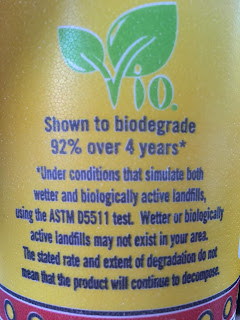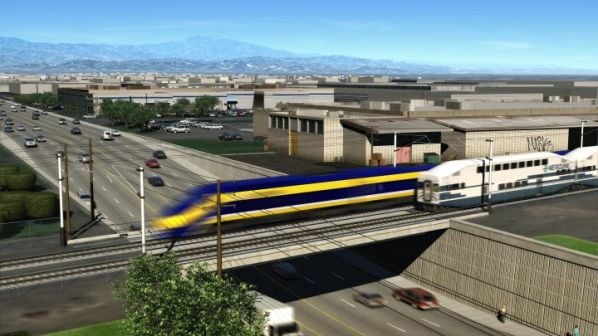Today's Blogpost is special, because of Earth Day, a created Holiday that celebrates the Gaia Worship Cult.
Once upon a time, many years ago, before we, as a culture, lost our minds, there was Stewardship. It is a concept of using the resources that we have available in the best possible way, taking ALL resources, including time and money, into consideration. Conservation was a key part of that concept. Farmers were called upon to be good stewards. Those who didn't and abused the land by planting the same plants in the same locations over and over again, or went broke, because they failed to be stewards of the money they had, or both. Now, it's no longer taught.
Then in the 1960s, we saw some massive industrial pollution. Love Canal became a rallying cry to get the Federal Government into the regulation of Pollution. President Richard Nixon instituted the Environmental Protection Agency. It was the backlash to the excesses of industrial pollution, that had gotten out of hand. Exhaust pollution standards were established. Then it got too onerous. There were regulations on everything. We bought into the peak oil theory, and limited resources, so the EPA established Corporate Average Fuel Economy requirements. People couldn't just purchase the car they wanted: The Government started to make enough regulations to where these were mandates and "Economic Taxes" that the Vehicle Buyer would have to pay, disguised in the vehicle cost.
Instead we're teaching "Environmentalism," and "Going Green." And everyone seems to worry about "killing the planet."
******************************
Humans will strut and fret our hour upon the stage, then be heard no more.
Jurassic Park is a great popcorn movie, one I recently rewatched with my children who, to my surprise, weren’t the least bit frightened.
The story comes from the mind of the late Michael Crichton and contains wonderful themes about unpredictability, hubris, unintended consequences, and the dangers of central planning.
Though he never practiced medicine, Crichton attended Harvard Medical School, graduating in 1969.
Many FEE readers likely already knew this. (Tyler Curtis wrote a fine article on it a couple of years ago in which he explained that Jurassic Park is a microcosm of socialism.) But I had been unaware of these themes until I read Crichton’s book last year after buying a paperback at a garage sale for 50 cents.
As is usually the case, Jurassic Park the novel is superior to the film. Crichton, one quickly sees, was not just a wonderful storyteller; he also possessed an extraordinary scientific mind.
The Science Behind Crichton's Stories
Though he never practiced medicine, Crichton attended Harvard Medical School, graduating in 1969. By his third year, after publishing several novels under the pen name John Lange, he decided he wanted to write full-time. But medical school was not a waste. Many of his technothrillers, including Jurassic Park, contain elements of biotechnology he no doubt learned while studying at Harvard.
Crichton, who died of lymphoma in 2008, was first and foremost a storyteller. But there is a theme that runs through much of his creative work (which included The Andromeda Strain, Westworld, and Sphere), and it’s this: humans, like Dr. Frankenstein, will struggle to control the miracles (and monsters) they create.
Malcolm’s warning to Hammond about meddling in powers he doesn’t understand is clear enough.
Of course, anyone who has seen Jurassic Park is familiar with this theme, which is depicted most memorably in a soliloquy from Dr. Ian Malcolm (Jeff Goldblum).
“The lack of humility before nature being displayed here staggers me,” Malcolm says, after getting a glimpse of the Jurassic world John Hammond has created. "Don’t you see the danger, John, inherent in what you’re doing here? Genetic power is the most awesome force the world has ever seen, but you wield it like a kid who’s found his dad’s gun.”
The “dad’s gun” line is a clumsy metaphor that doesn’t appear in Crichton's novel (I’m guessing it comes from David Koepp, who co-wrote the screenplay with Crichton), but Malcolm’s warning to Hammond about meddling in powers he doesn’t understand is clear enough.
As great as Goldblum’s Malcolm is, he’s less interesting than the Ian Malcolm in the novel. Watching the movie, it’s easy to see Ian Malcolm as an environmentalist fretting about Hammond upsetting the planet’s delicate ecosystem.
“What is so great about discovery? It is a violent, penetrative act that scars what it explores. What you call discovery, I call the rape of the natural world,” Malcolm says.
This, frankly, is a Hollywood version of Ian Malcolm. While he does imply that discovery is a penetrative act, he forcefully rejects the idea that humans can damage the planet in any meaningful way. In fact, it’s John Hammond who is concerned about the ability of humans to harm our world—and Malcolm scorns him for it.
Destroying the World
Read the following exchange, which takes place after Hammond expresses relief that “disaster is averted” because dinosaurs will not be able to escape the island.
“What disaster is that?” Malcolm said, sighing.
“Well, Hammond said, “they didn’t get free and overrun the world.”
Malcolm sat up on one elbow. “You were worried about that?”
"Surely that's what was at stake," Hammond said. "These animals, lacking predators, might get out and destroy the planet."
"You egomaniacal idiot," Malcolm said, in fury. "Do you have any idea what you are talking about? You think you can destroy the planet? My, what intoxicating power you must have." Malcolm sank back on the bed. "You can't destroy this planet. You can't even come close."
"Most people believe," Hammond said stiffly, "that the planet is in jeopardy."
"Well, it's not," Malcolm said.
Hammond replies that “all the experts”—note the word experts—“agree that our planet is in trouble.” It’s here where we see what Malcolm (and likely Crichton) thinks about “all the experts” who say Earth is in peril because of humans.
Malcolm sighed. "Let me tell you about our planet," he said. "Our planet is four and a half billion years old. There has been life on this planet for nearly that long. Three point eight billion years. The first bacteria. And, later, the first multicellular animals, then the first complex creatures, in the sea, on the land. Then the great sweeping ages of animals—the amphibians, the dinosaurs, the mammals, each lasting millions upon millions of years.
"Great dynasties of creatures arising, flourishing, dying away. All this happening against a background of continuous and violent upheaval, mountain ranges thrust up and eroded away, cometary impacts, volcanic eruptions, oceans rising and falling, whole continents moving . . . Endless constant and violent change . . . Even today, the greatest geographical feature on the planet comes from two great continents colliding, buckling to make the Himalayan mountain range over millions of years. The planet has survived everything, in its time. It will certainly survive us."
Hammond, the arrogant planner, refuses to budge. "What if there was a radiation leak?" he asks.
"Suppose there was," Malcolm said. "Let's say we had a bad one, and all the plants and animals died, and the earth was clicking hot for a hundred thousand years. Life would survive somewhere—under the soil, or perhaps frozen in Arctic ice. And after all those years, when the planet was no longer inhospitable, life would again spread over the planet. The evolutionary process would begin again. It might take a few billion years for life to regain its present variety. And of course it would be very different from what it is now. But the earth would survive our folly. Life would survive our folly.
Only we," Malcolm said, "think it wouldn't."
Hammond, unconvinced, brings up the receding ozone layer.
"Well, if the ozone layer gets thinner–"
"There will be more ultraviolet radiation reaching the surface. So what?"
"Well. It'll cause skin cancer."
Malcolm shook his head. "Ultraviolet radiation is good for life. It's powerful energy. It promotes mutation, change. Many forms of life will thrive with more UV radiation."
"And many others will die out," Hammond said.
Malcolm sighed. "You think this is the first time such a thing has happened? Don't you know about oxygen?"
"I know it's necessary for life."
"It is now, " Malcolm said. "But oxygen is actually a metabolic poison. It's a corrosive gas, like fluorine, which is used to etch glass. And when oxygen was first produced as a waste product by certain plant cells—say, around three billion years ago—it created a crisis for all other life on our planet. Those plant cells were polluting the environment with a deadly poison. They were exhaling a lethal gas, and building up its concentration. A planet like Venus has less than one percent oxygen. On earth, the concentration of oxygen was going up rapidly—five, ten, eventually twenty-one percent! Earth had an atmosphere of pure poison! Incompatible with life!”
Hammond, in irritation, concedes. But we see he doesn’t understand what Malcolm is trying to show him.
"So what is your point? That modern pollutants will be incorporated, too?"
"No," Malcolm said. "My point is that life on earth can take care of itself. In the thinking of a human being, a hundred years is a long time. A hundred years ago, we didn't have cars and airplanes and computers and vaccines. . . . It was a whole different world. But to the earth, a hundred years is nothing. A million years is nothing. This planet lives and breathes on a much vaster scale. We can't imagine its slow and powerful rhythms, and we haven't got the humility to try. We have been residents here for the blink of an eye. If we are gone tomorrow, the earth will not miss us."
“And we very well might be gone," Hammond said, huffing.
"Yes," Malcolm said. "We might."
Malcolm is saying the very concept of humans “destroying the planet” is both absurd and arrogant. Can we ruin it by poor stewardship and render it a less beautiful and less hospitable place? Of course. But that’s a different thing.
"So what are you saying? We shouldn't care about the environment?"
"No, of course not."
"Then what?"
Malcolm coughed, and stared into the distance. "Let's be clear. The planet is not in jeopardy. We are in jeopardy. We haven't got the power to destroy the planet—or to save it. But we might have the power to save ourselves."
The Lesson
The exchange between Hammond and Malcolm is entertaining, but its ultimate message was not immediately apparent to me. Reflecting on it now, I think it’s clear. Malcolm is saying that humans don’t have the power to destroy the planet. It’s the fact that we think we can destroy the planet that represents the true danger.
Malcolm, for all his brilliance, is quite humble. Unlike Hammond, he has no wish to bend nature to his will or illusions of grandeur.
As F.A. Hayek said, “The curious task of economics is to demonstrate to men how little they really know about what they imagine they can design.”
Humans, he is saying, will strut and fret our hour upon the stage, then be heard no more. He puts man in his proper place in the universe.
Humility does not come easy for humans. We are Babel-builders by nature, and the 20th century showed its costs.
The great Austrian economist F.A. Hayek once said, “The curious task of economics is to demonstrate to men how little they really know about what they imagine they can design.”
It’s a lesson Ian Malcolm learned, but John Hammond did not. And it’s a lesson we’d all do well to remember today.
Jonathan Miltimore is the Managing Editor of FEE.org. His writing/reporting has appeared in TIME magazine, The Wall Street Journal, CNN, Forbes, Fox News, and the Washington Times.
Reach him at jmiltimore@FEE.org.






